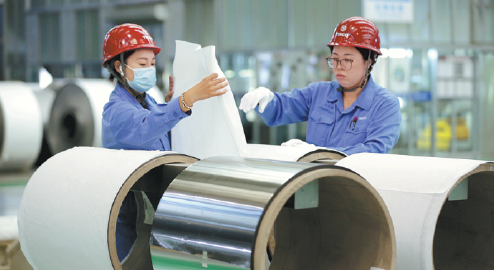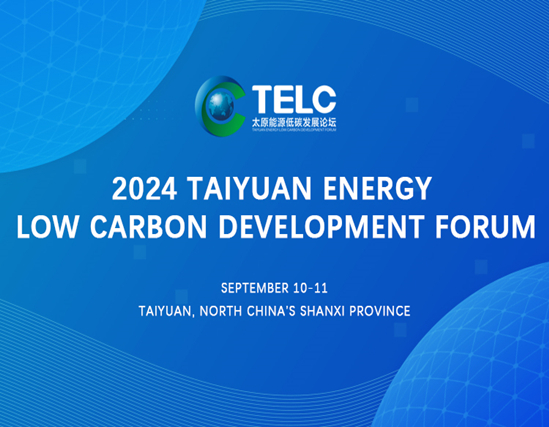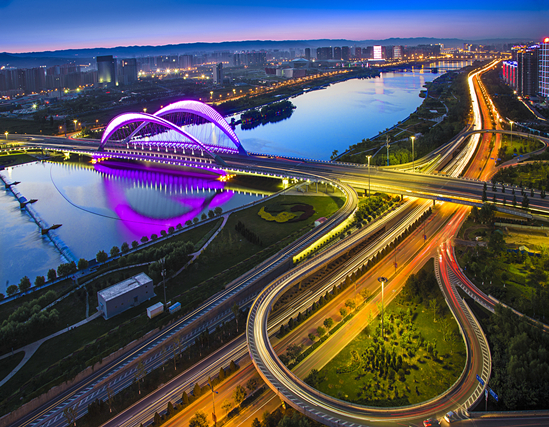Shanxi drives growth with industrial upgrade and rural vitalization
Updated: 2022-12-30

Taiyuan Iron and Steel Group is among the few in the world that can produce steel foil with a thickness of less than 0.02 millimeters and a width of more than 600 mm. [Photo by Wu Liuhong for China Daily]
Province shoulders double responsibility to ensure nation's energy security and fulfill its sustainable emission targets in 2030 and 2060
The North China province of Shanxi is promoting high-quality development by diversifying and upgrading its energy industry; vitalizing its rural areas through modernized agriculture, integrating culture and tourism, and promoting e-commerce; and cultivating emerging sectors as new growth engines.
As a major supplier of coal, electricity and other energy resources, Shanxi shoulders the double responsibility of ensuring the nation's energy security and helping the country fulfill its sustainability targets, including the goals of carbon peaking before 2030 and carbon neutrality before 2060.
By stabilizing production, Shanxi made a great contribution this year to ensuring its coal supply to the country.
The Shanxi Energy Bureau said during the first 11 months of the year, the province produced a total of 1.2 billion metric tons of coal, ranking it first in the country. The majority of the output was transported to the rest of the nation.
The bureau predicted that whole-year coal output is expected to surpass 1.3 billion tons.
To help to ensure the sustainability goals of the province and the entire country, Shanxi has made great strides in upgrading its coal mining and coal-fired power generation industries, as well as accelerating the development of clean and renewable energy sources.
The bureau said more than 78 percent of the coal output is produced at advanced facilities featuring high efficiency, digitalized operations and clean production. All coal-fired power generation facilities reached a standard of super-low emissions. The bureau added the amount of electricity generated from clean energy resources like wind and solar power now accounts for 40.34 percent of Shanxi's total.
In Shanxi's energy industry, there are a great number of cases of best practices for sustainable development.
Tunlan Coal Mine, a coal-mining and coal-fired power generation enterprise in the Shanxi city of Gujiao, for instance, is contributing to sustainable development by establishing an innovative coal refuse recycling and reuse project.
The coal ash from its power plant is now transported via conveyor belts totaling 2 kilometers to its depleted mining shafts for refilling, reaching a depth of up to 400 meters underground. The company said the practice has multiple benefits in both economic and environmental terms.
It can solve the problem of solid waste discharge and avoid the risks of geological disasters. It is also a practical solution to saving on the costs of waste disposal and shaft refilling.
In addition, refilling depleted shafts with coal refuse can help to enhance the coal mine's safety and extend its operational life cycle. "The operational period of shafts near the refilled ones can be extended by more than 12 years," an executive of the company said.
Wang Maosheng, deputy chief of the Shanxi Energy Bureau, said other excellent practices in the energy industry also include simultaneous extraction of coal and coal-bed methane, and producing hydrogen from coking gas, as well as the extensive use of digital technologies, 5G communications and the internet of things in developing intelligent coal mines.
During the 2022 Taiyuan Energy Low Carbon Development Forum held on Sept 1-3, these best practices were presented and aroused great interest among participants from home and abroad.
In addition to the revolutionary transformation of the energy industry, Shanxi's efforts dedicated to sustainability also include improving the environment.
The province has implemented a comprehensive environmental campaign to improve water and air quality, curb soil erosion and encourage the greening of the land.
Over the recent years, Shanxi has seen an annual addition of 267,000 hectares of forests, with its forest coverage surpassing the national average for several years.
Aside from fulfilling sustainability goals, Shanxi also regards advancing manufacturing industries, modernizing agriculture, developing emerging sectors and fostering new growth areas as crucial parts of its high-quality development.
Taiyuan Iron and Steel Group is one of the best examples for advanced manufacturing in Shanxi.
The company is one of the first steel-makers in Shanxi with intelligent operations and automation. It is among the few in the world that can produce steel foil with a thickness of less than 0.02 millimeters and a width of more than 600 mm.
The product, which is called super-thin broadsheet steel foil, can take the place of aluminum foil in similar industrial applications such as the fields of aerospace, electronics, petrochemicals and automobiles. Compared with aluminum foil, however, it performs better in erosion, moisture and heat resistance.
Thanks to the promotion of farming machines, new technologies and new techniques, Shanxi's agricultural industry has seen steady growth in recent years.
This year, Shanxi's total grain output and per-unit grain output both reached record highs. Local statistics show that the total output hit 14.64 million tons in 2022, 430,500 tons more than in the previous year. Perhectare output reached 4.65 tons, about 119 kilograms more than last year's figure.
Shanxi has fostered 14 strategic emerging industries as new growth engines for the local economy. The new industries, mostly falling in high-tech categories, are playing a crucial role in promoting the upgrade and transformation of the province's traditional industries.
The central Shanxi cities of Taiyuan and Xinzhou are implementing a program to build an integrated economic zone and develop a city cluster.
The zone will mobilize resources in both cities to build industrial clusters centering on new materials and advanced equipment manufacturing, and foster new engines for the province's economic development, officials said.
Before the program, Taiyuan teamed up with the city of Jinzhong to its south to develop the Shanxi Transformation and Comprehensive Reform Demonstration Zone.
The three cities of Taiyuan, Xinzhou and Jinzhong have formed a larger city cluster which can drive development of a bigger area of neighboring cities with their own industrial strengths and advantages, the officials said.
Zhang Yi contributed to this story.



